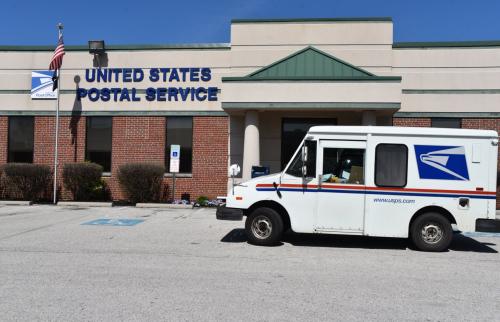Last week, the Congressional Budget Office released an important analysis on the potential efficacy, need, and impact of a national infrastructure bank (NIB.) While the idea remains stuck in political and policy limbo, the report is still highly relevant. Interest in the idea remains high, helping to inform the policy innovation happening in states like New York and cities like Chicago.
The CBO report is, as usual, careful and thorough. The analysts over there are super sharp and know what they’re talking about especially–and obviously–when it comes to the impacts on the federal budget. (In fact, the section in the report about the budgetary cost of credit support is an important read.)
While the report raises some legitimate concerns let me make five quick points and provide a somewhat different perspective in order to make a stronger case for the NIB.
First, the CBO report focuses just on transportation infrastructure and even then just on the limited field of highway and transit projects. Of course, the revenue streams coming from ratepayers do make energy and water projects unique. But that’s precisely the point and why those projects may be more appropriate for an NIB than traditional road projects that should be funded in the traditional way.
It remains that the greatest potential for an NIB is for a different set of complex investments such as ports (sea, air, intermodal) and rail (freight and passenger), renewable energy, dams, levies, water treatment facilities, and probably large-scale urban redevelopment projects.
The related second point is that an NIB would ideally focus on projects that are truly national in scope. Not that they’re giant mega projects traversing the continent but that they connect to larger national goals. If we truly had a multi-modal freight plan, one could envision the NIB supporting projects necessary to fulfill its goals. Or else projects that are part of a national renewable energy strategy. Then because the projects have national purpose and intent, they should be granted priority and expedited through the federal review process. The point here is that a NIB shouldn’t be established to enable us to keep doing what we’ve always done.
Third is that the establishment of an NIB would be a strong signal to the private sector that the national government is committed and open to private involvement in infrastructure financing and delivery. Today private sector financiers and investors are understandably frustrated by the lack of clarity about the rules of engagement that is–as in many states–a real hindrance to the development of the public-private partnership market.
The fourth point is that an NIB would provide technical assistance and expertise to states and other public entities that cannot develop internal capacity to deal with the projects themselves. Some of the most potentially transformative investments are inherently complex and require a mix of investors from all levels of government, across different federal programs, combined with the private sector, and even from other nations’ sovereign wealth funds. Expertise to consider such deals and fully protect the public interest is paramount.
Last is the skepticism expressed by the CBO about the market for projects that fit the criteria I’ve described. A fair point, though there’s probably a bit of chicken and egg thing happening. The establishment of an NIB with clear scope and criteria would undoubtedly result in a range of new and innovative projects. In fact, we’re already seeing it here at the Brookings Metro Program.
Last year we challenged public and private leaders to send us their ideas for innovative, transformative investments. And the response was tremendous. We got transportation projects like the New International Trade Crossing in Detroit. We got energy projects like the Plains & Eastern clean energy transmission line in the Southeast. We got projects for education and research institutions like the Applied Sciences NYC. And we got redevelopment and placemaking projects to build out a new vision of the next American metropolis in San Francisco and Chicago. Whether or not these projects would all be supported by an NIB is hard to say, but the point is that these projects are out there and are likely just the tip of the iceberg.
I’m not naïve about this. Prickly issues around congressional jurisdiction, project selection, capitalization levels, and financing mechanisms are still unresolved and why the NIB remains as it has been for decades: the next greatest idea. In the meantime, Washington should pay attention to how states and metro areas are getting projects done in this challenging fiscal and policy environment.
The Brookings Institution is committed to quality, independence, and impact.
We are supported by a diverse array of funders. In line with our values and policies, each Brookings publication represents the sole views of its author(s).



Commentary
What Would an Infrastructure Bank Really Do?
July 16, 2012